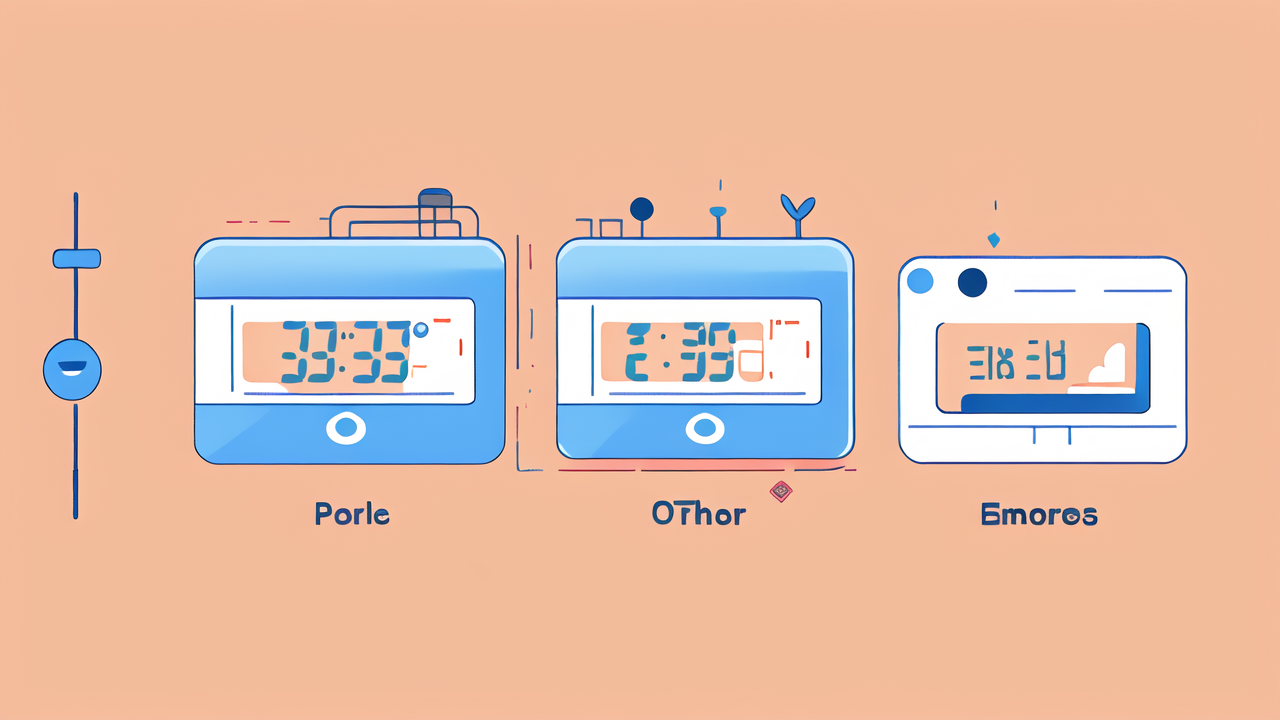The Rise of Smart Pro Watches in the Wearable Market
Understanding the Demand for Advanced Body Measurement Tools
Smart pro watches have become increasingly popular in recent years. They offer advanced body measurement tools that go beyond basic fitness tracking. These devices can monitor heart rate, blood pressure, and even blood oxygen levels. Users want more detailed health data to make informed decisions about their well-being. Smart pro watches meet this need by providing accurate, real-time information. They help people track their fitness progress and manage chronic conditions. The demand for these advanced tools reflects a growing interest in personal health management.

Key Features That Set Smart Pro Watches Apart
Smart pro watches stand out due to their advanced features. They often include:
- Continuous heart rate monitoring
- Sleep tracking with detailed sleep stage analysis
- Stress level assessment
- ECG capabilities
- Blood oxygen saturation measurement
- GPS tracking for outdoor activities
- Water resistance for swimming
These features make smart pro watches more than just timepieces. They are comprehensive health and fitness companions. Many models also offer customizable watch faces and app integrations. This allows users to personalize their experience and access a wide range of functions.
The Impact of Wearable Technology on Professional Settings
Smart pro watches are making their way into professional environments. They offer benefits for both employees and employers. In healthcare, doctors use these devices to monitor patients remotely. This improves patient care and reduces hospital visits. In corporate settings, smart watches can track employee wellness programs. They can also send important notifications without the need to check phones. Some companies use them to enhance workplace safety by monitoring physical strain. As the technology advances, we can expect to see more innovative uses in various industries.
Innovations in Smart Pro Watch Technology
Cutting-Edge Sensors and Their Applications
Smart pro watches are evolving with new sensor technologies. Advanced optical sensors can now detect blood oxygen levels with high accuracy. Some watches use bioelectrical impedance analysis to measure body composition. This provides data on muscle mass, body fat, and hydration levels. Newer models incorporate temperature sensors for early detection of illness. Some even have sweat analysis capabilities to monitor electrolyte balance. These innovations allow for more comprehensive health monitoring. They turn smart pro watches into powerful diagnostic tools for everyday use.

Integration with Existing Health and Wellness Platforms
Smart pro watches are not standalone devices. They integrate seamlessly with various health and wellness platforms. This integration allows for a more holistic approach to health management. Users can sync their data with apps like Apple Health, Google Fit, or MyFitnessPal. This creates a comprehensive health profile that includes activity, nutrition, and medical data. Some watches can even share data directly with healthcare providers. This feature enhances telemedicine services and improves patient care. The integration capabilities make smart pro watches valuable tools in the broader health ecosystem.
Case Studies: Success Stories from Various Industries
Smart pro watches have found success across different sectors. In healthcare, a hospital in Boston used smart watches to monitor COVID-19 patients remotely. This reduced the risk of exposure for healthcare workers. A manufacturing company in Detroit implemented smart watches to track worker fatigue. This led to a 20% decrease in workplace accidents. In professional sports, a Major League Baseball team used smart watches to optimize player performance. They tracked sleep patterns and recovery times, leading to improved game statistics. These case studies show the versatility and impact of smart pro watch technology in real-world applications.
The Future of Body Measurement Tracking in the United States
Predicting Market Growth and Consumer Adoption
The smart pro watch market in the US is set for significant growth. Experts predict a compound annual growth rate of 15% over the next five years. This growth is driven by increasing health awareness and technological advancements. Consumer adoption is expected to rise, especially among millennials and Gen Z. These groups value health tracking and are comfortable with wearable technology. As prices become more competitive, smart pro watches will become more accessible. This will further boost adoption rates across different age groups and income levels.

Regulatory Considerations and Privacy in Wearable Tech
As smart pro watches collect more personal health data, privacy concerns are growing. The FDA is developing guidelines for wearable medical devices. This includes some smart watch features like ECG monitoring. Companies must ensure their devices comply with HIPAA regulations when handling health data. There's also a push for more transparency in data collection and usage. Users want control over their information and clear consent processes. Balancing innovation with privacy protection will be crucial for the industry's future. Companies that prioritize data security and user privacy will likely gain a competitive edge.
Opportunities and Challenges for Manufacturers in the US Market
The US market presents both opportunities and challenges for smart pro watch manufacturers. The growing demand for health-focused wearables offers significant revenue potential. However, competition is intense, with both established tech giants and startups vying for market share. Manufacturers must innovate constantly to stay relevant. They need to focus on improving accuracy, battery life, and user experience. There's also an opportunity to develop specialized devices for specific health conditions or industries. Challenges include navigating complex regulations and addressing consumer concerns about privacy and data security. Success will depend on balancing technological advancement with user trust and regulatory compliance.




Leave a comment
This site is protected by hCaptcha and the hCaptcha Privacy Policy and Terms of Service apply.